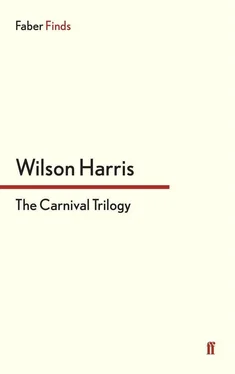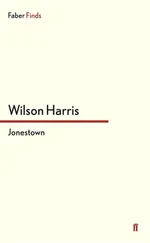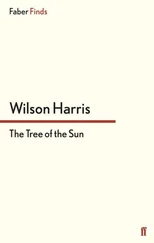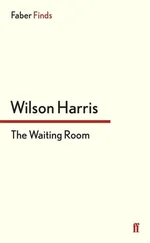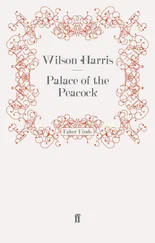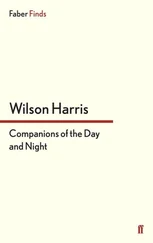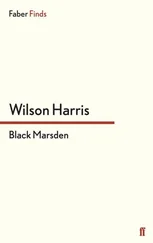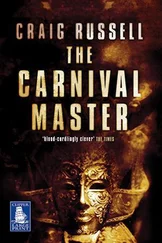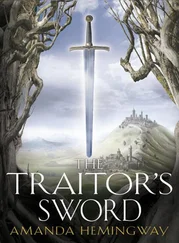The cabin was still as a whisper in the river of the dead. It was furnished with emblems of immemorial wreckages, immemorial forests, hills. It mirrored the still light of voyages on inland sun-seas within the Waterfall of space. It reflected the sun in the mouth of space, the dragon of space in which we stood. It was host to painted newborn, newdead pilgrims, newborn, newdead pirates, newborn, newdead slaves, newborn, newdead priests — newborn, newdead populations wired into a ribcage. It was the still dance of the robin and the dove, the dolphin and the whale.
I was awakened in the Dream of captivity, captivity in the past, captivity in the future, by the emphasis in Proteus’s cabin on newborn, newdead species. I wanted to shout –
‘It’s the passivity, the acceptance of a glittering museum one enshrines again and again, that makes it so testing — if not unbearable — in this reach of future time from which one looks back, from which the living dreamer looks back.
‘So much has happened yet no one claims moral responsibility except that I was born there in that shell or cabin or cave: a helpless infant. How may an infant see himself or herself as subsisting upon a frail thread of moral responsibility in all peoples for the world of tomorrow? And I insist — Canaima was born there too. He was my twin. He was forced on me, as if he were a different race, a different pigmentation; I never wanted him, never welcomed him as a brother or a twin.’
There was no reply but the enormity of responsibility threaded into infant life, infant conscience, infant humanity, began to dawn upon me. As if I had received a staggering blow from one of my motionless captors. Staggering in that the living dreamer knows himself as an infant lighthouse in space because of polarities of the conscious and unconscious that are lifted to another level of counterpoint, passive/active counterpoint, newborn/newdead counterpoint. No fossil reconstruction of skeleton or frame is a purely technical achievement: for what is rebuilt by fallible manoeuvre walks or swims or flies again within the universal unconscious of nature to question itself, to question every formula by which its scales or feather or hair were stitched together. Thus it is that an infant lives again within a body of unconscious wholeness that questions every enterprise of the fallible imagination that would fix it, or pin it, to the wall of a cabin or a museum.
A staggering blow of re-awakened spirit is built into the vicarious essence that runs through our visualizations of reconstructed presences in nature. A staggering blow lies at the heart of the early Church, early art, which begins to clothe itself with the unfinished fabric of an infant lighthouse and vicar of Time, vicar of the primordial imagination.
He held me; my motionless subtly active captor — within an aeon of unconscious wholeness that drew us to face one another — held me, forced me to look again into the depths of the cabin at the drowned child I had pulled up the serpent-ladder from the river of space. Pulled up, sheltered in my arms as vicar of Time, and borne across a landscape one thousand million years old into an uncertain and threatened future. Pulled up and borne and placed upon the stage of Proteus’s cabin.
The transparency of the unconscious sun broke in my eyes and made clear to me beyond belief whose face and body I had borne. I studied every feature as if it were imprinted on ancient yet modern canvas. There was no doubt as to who it was. A child of indeterminate age. Five to ten years old. Five, six, seven, eight. How indeterminate is the age of a child, how starved is age, how thin is agelessness? It was Canaima. But how could it be? Canaima had not died in this cabin when he was eight years old or I was eight years old. Was I not eight years older than he? Or was it five or six? My unwanted brother had survived. As I had survived. Lucius had not died or been drowned as a child. Perhaps I had painted him or sculpted him as a child — when I was eight or ten — painted him as an infant and buried the paper or wood. It was a Dream of such power it made me feel I had killed him then if not in the flesh then as a vivid being — however delicate — vivid artifact of presence I wished to suppress and forget for ever. But here he was. Back again. The umbilicus-eel or belt had straightened itself into a knife in his hand. The technology of a knife. A tall electric knife or spire pointing to the invisible stars in a still blazing sky. Blazing, setting, unmoving sun.
‘I threw Canaima’s knife — my twin-brother’s knife — into the heavens on the first bank of the river of space. Inspector Robot and I were climbing god-rock at the time. God-rock’s spire it seems now to me! God-rock’s spire is the spire of my Imaginary City of God. How strange are the foundations of the sacred, sacred reciprocity between innocence one nurtures with all one’s heart and guilt one has suppressed or buried from the day one was born. Sacred reciprocity that provides a vertical bridge through the faults of tilted nature, tilted banks which move the spoil of passive being, the passive Word, to transcend a levelling proclivity. Sacred reciprocity between art and science, between the vertical and the horizontal.
‘I struck the dancing angel or Macusi Bird. The knife became a form of human lightning, man-made lightning. At the time I could not tell whether the knife continued up or whether it fell back into the Waterfall stained with ozone and the blood of punctured atmospheres. Or whether it fell in my unconscious to erupt into the Dream of this cabin. Canaima’s knife! Now I know. It fell here. It was his Shadow — my brother’s indeterminate Shadow (twin-Shadow, older Shadow than I, younger than I?) — that I drew into my arms up the serpent-ladder. He wanted to tell me — indeed he wants to tell me that the knife I threw may never be purified until he comes Home to me within my deeds (however involuntary, however secret, however buried or forgotten). The Macusi god-rock is the spire of the City of God that floats on a cornerstone encompassing the knife of civilization, that is in need of ceaseless purification, and the thorn of the Rose.’
One could hear a murmuring vibration in Shadow-organ space. One could hear one’s voice issuing from the body of a stranger.
‘It is a sounding cornerstone that exists everywhere, in the soil, in the air, in the fire, in the water. It exists in the singing chorus of the Waterfall, in the greenhouse Shadow of the drowned in space whose indeterminate age makes them as much our victims as our attackers, as much our killed as our killers.
‘Are we too old, too young, to dream of the knife and the Rose? When do dreams commence? In the womb or in the seed of the womb? I have drawn the Shadow of my brother from the river of the dead. And still I ask myself: whose Shadow? whose brother? whose stranger? A life or a death that baits the unconscious is not to be equated with conventional structures, or conventional hubris, or conventional uniformities and clarities. The sweetest song of unconscious beauty may turn and rend a theatre of technicalities, technical apparatus, technical nudity, technical descriptions of the act of love or death, purely technical climax that averts its head from the anatomy of the abyss.
‘Is it the anatomy of the abyss that I glimpse in myself, in him, in nameless others one bears — who bear one — into the parentage of Being? Have I borne a spatial being that is capable of taking upon itself familiar/unfamiliar resemblances? Does the burden of art involve a confrontation with an ultimate loss of fear? Nothing that is or was, nothing that bears or is borne, was created in the beginning from fear, fear of one or fear of the other, though fear may come in the wake of a Presence with which one needs to be reconciled through stages of haunted masquerade, the haunted sinner in one’s arms, or in the cradle, or on the stage of Memory …
Читать дальше
